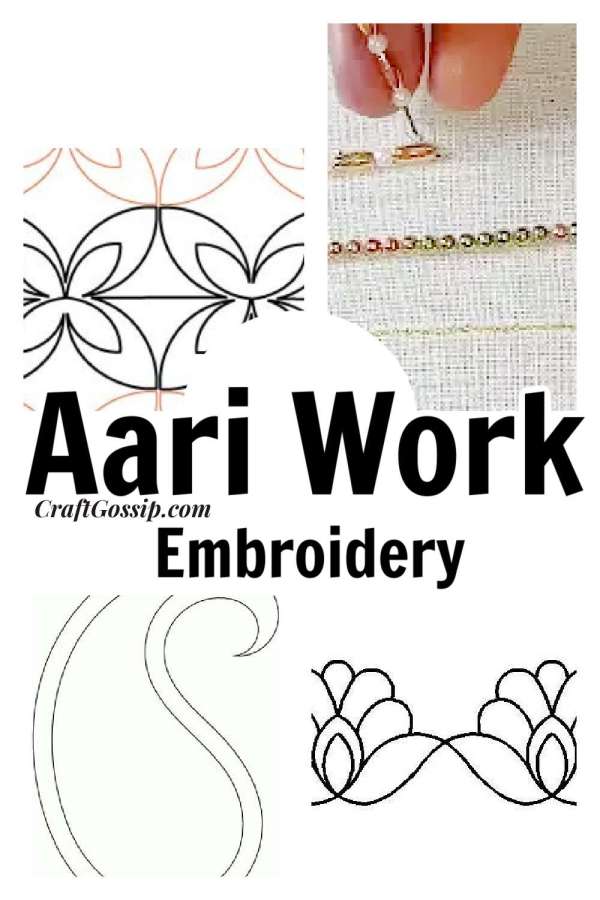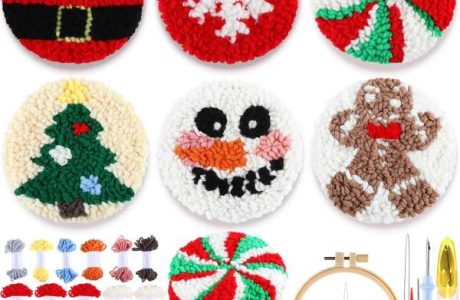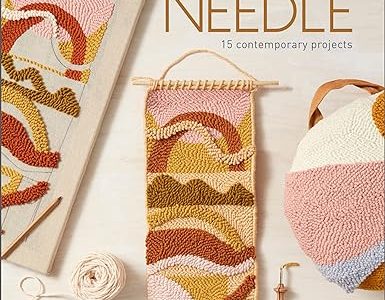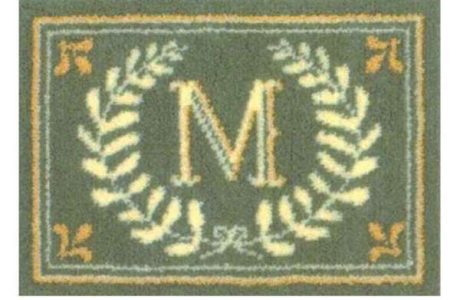
Aari Hand Embroidery is a centuries-old art form that has been passed down through generations in India. This intricate, delicate craft is a labor of love and requires extreme skill, patience, and attention to detail. While it is often used to decorate traditional saris and fabrics, Aari Hand Embroidery is also used to create beautiful wall hangings, shawls, and accessories. The tiny, delicate stitches are formed by hand and create intricate designs that are a delight to behold. The art form is a reflection of India’s rich cultural heritage and is an excellent way to showcase the country’s vibrant history. Aari Hand Embroidery is a timeless craft that will continue to be admired and passed down through generations.
History of Aari Hand Embroidery
Aari Hand Embroidery is believed to have originated in Central India between the 8th and 13th centuries. However, there is evidence that the art form dates back to the 2nd century and was used by Buddhist monks to decorate robes. Aari Hand Embroidery was used primarily to embellish saris and fabrics, and its use in garments remained popular until the early 20th century when machine-made fabrics became more readily available. The art form fell out of favor for about 100 years but has since been revived and is experiencing a resurgence in popularity. Aari Hand Embroidery is also known as aari work, aari embroidery, and aari zari. Aari Hand Embroidery is sometimes conflated with a similar craft known as zari embroidery. While both techniques use tiny stitches to create intricate designs, they are different techniques. Aari Hand Embroidery relies on the use of a needle, while zari embroidery uses a looper.
Traditional Uses of Aari Hand Embroidery
Aari Hand Embroidery is most popular for decorating traditional Indian garments like saris and wedding gowns but is also used on other fabrics. The tiny stitches used in Aari Hand Embroidery create intricate designs that are a delight to behold. In addition, the craft is believed to bring good luck to the wearer of garments embellished with Aari Hand Embroidery. Date Palm Fibres: The palm fibers used in Aari Hand Embroidery are extracted from the Date palm tree. The tree is native to the Middle East, Asia, and Northern Africa. Although palm fibers are used to create fabrics such as silk and velvet, the fibers are considered the tree’s discarded stepchild. The tree uses the fibers to transport water, minerals, and nutrients throughout its trunk. The Date palm tree takes between 10 and 15 years to produce enough fibers to be used in fabrics.
Benefits of Aari Hand Embroidery
Aari Hand Embroidery is a centuries-old art form that has been passed down through generations in India. This intricate, delicate craft requires extreme skill, patience, and attention to detail. It is a labor of love and is a great way to showcase the country’s vibrant history. Aari Hand Embroidery is often used to decorate traditional saris and fabrics, but is also used to create beautiful wall hangings, shawls, and accessories. The tiny, delicate stitches are formed by hand and create intricate designs that are a delight to behold. The art form is a reflection of India’s rich cultural heritage and is an excellent way to showcase the country’s vibrant history. Aari Hand Embroidery is a timeless craft that will continue to be admired and passed down through generations.
The Art of Aari Hand Embroidery
Aari Hand Embroidery is a craft that is best done while sitting down to ensure the steady use of hands. Traditionally, the art was done on the wall of the house, but is now often done on a stand that can be moved. Its placement is dependent on personal preference. Since the craftsman needs both hands free, they cannot also be looking at the wall. It is typically done by women, but boys are also taught the craft. It is done using a very fine needle and thread made from silk, gold, or silver. The thread is tied to a wooden handle that is then inserted into a hole that has been made in the fabric. The needle is manipulated to create patterns including flowers, vines, birds, animals, and deities. It is a tedious process that can take hours to complete a single item.
How to Get Started with Aari Hand Embroidery
Aari Hand Embroidery is a centuries-old craft that is centuries old and has been passed down through generations in India. This intricate, delicate craft requires extreme skill, patience, and attention to detail. It is a labor of love and is a great way to showcase the country’s vibrant history. Aari Hand Embroidery is often used to decorate traditional saris and fabrics, but is also used to create beautiful wall hangings, shawls, and accessories. The tiny, delicate stitches are formed by hand and create intricate designs that are a delight to behold. The art form is a reflection of India’s rich cultural heritage and is an excellent way to showcase the country’s vibrant history. Aari Hand Embroidery is a timeless craft that will continue to be admired and passed down through generations.
Materials and Tools Needed for Aari Hand Embroidery
Aari Hand Embroidery is a centuries-old art form that has been passed down through generations in India. This intricate, delicate craft is a labor of love and requires extreme skill, patience, and attention to detail. While it is often used to decorate traditional saris and fabrics, Aari Hand Embroidery is also used to create beautiful wall hangings, shawls, and accessories. The tiny, delicate stitches are formed by hand and create intricate designs that are a delight to behold. The art form is a reflection of India’s rich cultural heritage and is an excellent way to showcase the country’s vibrant history. Aari Hand Embroidery is a timeless craft that will continue to be admired and passed down through generations.
Aari Hand Embroidery Techniques
The art of Aari Hand Embroidery is done using a very fine needle and thread made from silk, gold, or silver. The thread is tied to a wooden handle that is then inserted into a hole that has been made in the fabric. The needle is manipulated to create patterns including flowers, vines, birds, animals, and deities. It is a tedious process that can take hours to complete a single item. Bamboo Work – Bamboo is used to create the various motifs used with Aari Hand Embroidery. The Bamboo is carved and pierced to create different shapes and motifs such as flowers, leaves, birds, etc. The Bamboo pieces are then strung together with silk or cotton thread and used to create patterns.
Tips for Perfecting Aari Hand Embroidery
Aari Hand Embroidery is a centuries-old art form that has been passed down through generations in India. This intricate, delicate craft requires extreme skill, patience, and attention to detail. It is a labor of love and is a great way to showcase the country’s vibrant history. Aari Hand Embroidery is often used to decorate traditional saris and fabrics, but is also used to create beautiful wall hangings, shawls, and accessories. The tiny, delicate stitches are formed by hand and create intricate designs that are a delight to behold. The art form is a reflection of India’s rich cultural heritage and is an excellent way to showcase the country’s vibrant history. Aari Hand Embroidery is a timeless craft that will continue to be admired and passed down through generations.
Resources for Learning and Practicing Aari Hand Embroidery
Aari Hand Embroidery is a centuries-old art form that has been passed down through generations in India. This intricate, delicate craft is a labor of love and requires extreme skill, patience, and attention to detail. While it is often used to decorate traditional saris and fabrics, Aari Hand Embroidery is also used to create beautiful wall hangings, shawls, and accessories.
Looking for Aari Patterns? You will find lots of patterns here.
aari work for beginners This tutorial is in English and Hindi great for beginners learning Aari work.
How to draw aari designs free hand method for beginners /sangeetha aari work
Free Patterns – NeedlenThread.com
Aari work for beginners/ aari basic class PART : 1/ chain stich
Sikhte Raho: 15 Different Type Double Silk Thread Stitches | Aari Work For Beginners | Hand Work In this video Sikhte shows you how to make 15 different Double Silk Thread Stitches for Aari work .
Sikhte Raho: 5 Different Work on Mirror for Beginners || Aari Work || Hand Embroidery This video tutorial shows you 5 different ways to attach mirrors for traditional Aari work.
Aari Embossed Leaf Filling Stitch Type- 2 Tutorial | aari work basic stitches online class in tamil This tutorial shows you how to fill in a leaf design, although this is not in English the tutorial is easy to follow with detailed filming.
Trending Maggam Work Blouse Designs For Beginners – Knotty Threadz
Aari Embroidery Tracing Design Book – 50 Designs in One Book:
Designs for Aari or Maggam Embroidery – Printable – Knotty Threadz
2 tracing designs ebook free download – Aari Naari









Leave a Reply